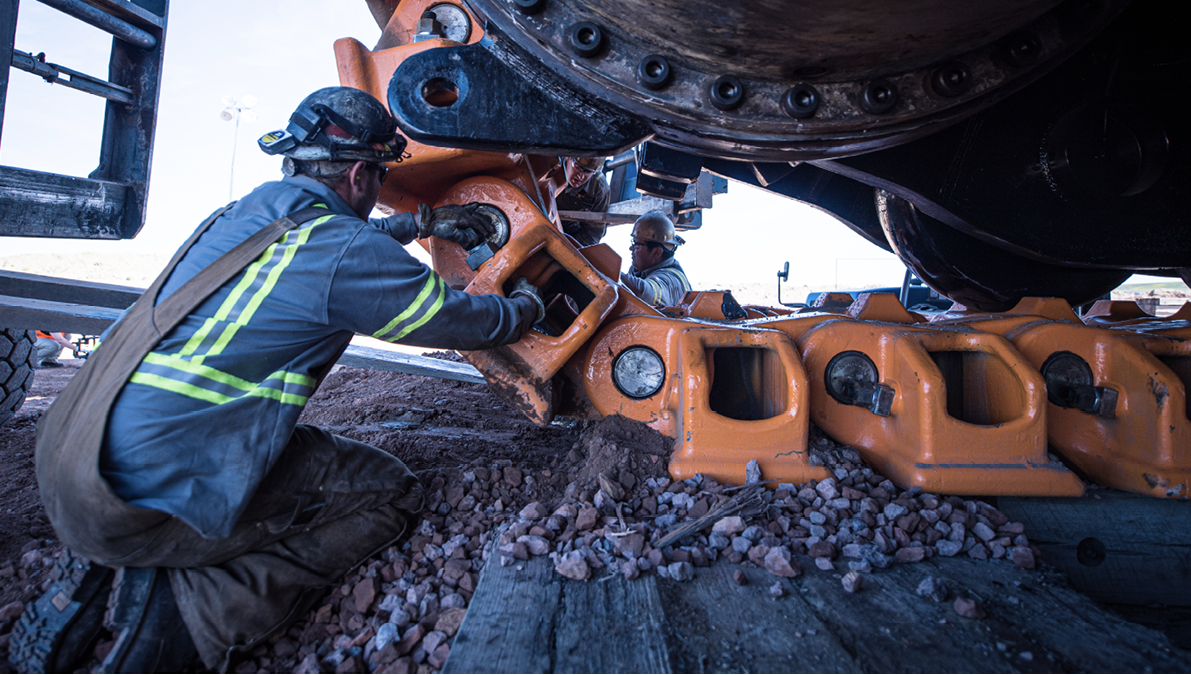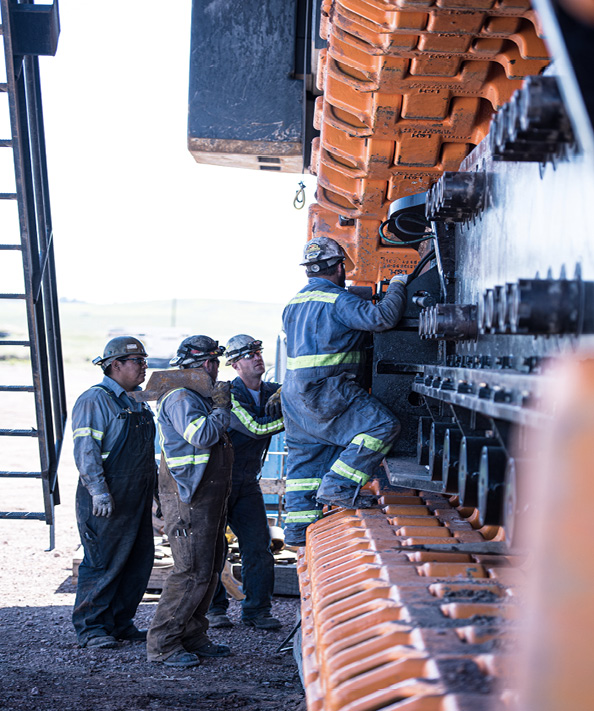Mines will never turn down a chance to achieve greater efficiency, and when it comes to equipment, the ways to go about that goal can be daunting – thus the impact and importance of a good supplier relationship. L&H Industrial recently proved that with a U.S. customer and its electric rope shovel undercarriages, leaving the operation with an efficiency boost of more than 30%, lowering downtime and a greater life span for the machines.

The challenge for Wyoming-based L&H was a request from the mine to extend the life of their undercarriages and standardize their cycles to 30,000 hours fleet-wide via upgrades. The team went to work to examine where the original machines could see upgrades, and where the areas of high failure and extreme wear were occurring for the mine.
Its team also looked at holistic ways to improve those life spans that would reduce downtime – time that L&H noted can range in cost from $600 to $60,000 an hour for mines, depending on the mineral being mined and an operation’s production costs. Downstream impacts from these kinds of stoppages often will also include higher maintenance needs, along with the safety hazards that arise from individuals working on those machines. More frequent maintenance cycles, after all, can add up quickly in terms of the financial bottom line.
“Our customers needed a more robust and reliable system that would give them the longest life and the least downtime and trusted L&H to provide a solution,” the company said, noting that it came up with a solution that included its shovel undercarriages. The company’s design has the ability to increase machine life, which it pairs with the benefits of less materials waste, lower TCO, and a reduction in maintenance for the lifetime of each undercarriage.
PROBLEM SOLVED
L&H pointed to a redesign of its key structures and the use of upgraded materials for this case, evaluating the most costly and unsafe pitfalls in current industry offerings. The result was a stronger design that additionally distinctly extended maintenance intervals and would simplify repairs.
“By understanding the nature of different field conditions and knowing the typical patterns of failure and stress, our engineers have developed an undercarriage that exceeds the performance of every other option on the market,” engineering director Bill Schroyer said.
“L&H works hard to design undercarriages that suit both the environment they will be used in, and the weight of the machine itself. Before deciding upon the materials and geometry that meet these needs, we go through a variety of design tools including analytical calculations, Finite Element Analysis, and casting design. L&H is small enough to be nimble in every circumstance, which means we can make design and manufacturing changes quickly, giving us an edge over our larger competitors.”
A PERFECT FIT
The results for L&H and the client were positive for the mine and beyond, giving the industry access to a design that can offer that same improvement goals for efficiency and cost. L&H reported the design improvement is 100% OEM compatible.
“When L&H designed, engineered and manufactured the first L&H undercarriage, our goal was to provide our customers with an assembly that would dramatically decrease downtime and total cost of ownership. Now with undercarriages running across the globe, L&H has proven that the current L&H system lasts at least 30% longer than conventional models.”

HOW DID THEY DO IT?
L&H explained that there were several facets to their design re-do that brought its goal to fruition. These include:
INNOVATIVE SHOE DESIGN
Impact resistance of manganese steel exceeds alloy track pads by more than triple and provides abrasion resistance in virtually all work environments. Surface hardened pins reduce the effect of wear on the track pitch, while an up-sized hinge clevis reduces contact loading to maintain the track pitch for both 495 and BOSS shovels. Additional clearance to the undercarriage was created by an elevated roller path, this provides more maneuverability in poor operating conditions and helps better distribute the weight of the machine.
DEEP ENGAGEMENT SYSTEM
The stable pitch and deep engagement design fits deep into drive tines helping create a larger contact area to reduce wear on the tumblers. The sophisticated design takes the tumbler from under pitched to stable pitch adding additional life to the component. L&H engineers built a high-performance, deep engagement track system for both CAT and Komatsu machines that reduces wear.
STRADDLE MOUNT IDLER UPGRADES
Moving the bushing to the outer bearing blocks, the bearing area is doubled and with innovative material of ToughMet bushings, bearing life is tripled and achieves 15,000 hours before maintenance intervention is needed.
HIGH HARDENED ROLLERS
Forged lower rollers and an advanced heat treating process extend life by at least 30%. Wider rollers for 495 undercarriages have also been incorporated into the design to drive down wear.
FINAL DRIVE MODIFICATION
No need to remove the transmission and motor to replace the final drive shaft, tumbler or bearings. All final drive components can now be removed from the outboard side of the side frame and the need to realign the motor has been eliminated – a smart modification that saves up to 50% of maintenance downtime.
IMPROVED SIDE FRAMES
A thicker inboard plate reduces stress and cracking in the original high stress areas, creating easier access to internal components. Additionally, a thicker top deck, full length skirts and outboard gussets protect lower rollers and pin keepers. Also, the rear section has been stiffened by over 40%, reducing problematic bending that occurs in standard side frames.
DRY LUBRICATED TRACK SLIDES
Low friction material has been added at the surface of the track slide and throughout the full depth of the track slide wear material. This reduces the wear to the track slide providing a wear benefit to the shoes, even after they are work hardened. In addition to more slide life, there is also a reduction in heat generation and propel effort due to the friction of the slides.
